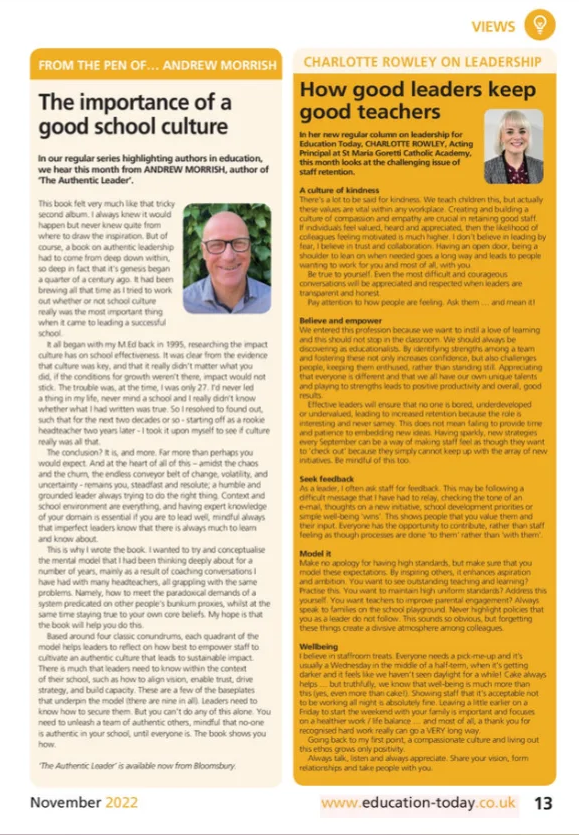The importance of good school culture
The following article is from the popular series 'From the Pen Of...' in which an author talks about their latest book. Here, I explain why I wrote The Authentic Leader and how it might help schools leaders build a really great culture.
This book felt very much like that tricky second album. I always knew it would happen but never knew quite from where to draw the inspiration. But of course, a book on authentic leadership had to come from deep down within, so deep in fact that it’s genesis began a quarter of a century ago.
It had been brewing all that time, as I tried to work out whether or not school culture really was the most important thing when it came to leading a successful school.
It all began with my M.Ed back in 1995, researching the impact culture has on school effectiveness. It was clear from the evidence that culture was key, and that it really didn’t matter what you did, if the conditions for growth weren’t there, impact would not stick.
The trouble was, at the time, I was only 27. I’d never led a thing in my life, never mind a school and I really didn’t know whether what I had written was true. So I resolved to found out, such that for the next two decades or so - starting off as a rookie headteacher two years later - I took it upon myself to see if culture really was all that.
The conclusion? It is, and more. Far more than perhaps you would expect. And at the heart of all of this – amidst the chaos and the churn, the endless conveyor belt of change, volatility, and uncertainty - remains you, steadfast and resolute; a humble and grounded leader always trying to do the right thing.
Context and school environment are everything, and having expert knowledge of your domain is essential if you are to lead well, mindful always that imperfect leaders know that there is always much to learn and know about.
This is why I wrote the book. I wanted to try and conceptualise the mental model that I had been thinking deeply about for a number of years, mainly as a result of coaching conversations I have had with many headteachers, all grappling with the same problems.
Namely, how to meet the paradoxical demands of a system predicated on other people’s bunkum proxies, whilst at the same time staying true to your own core beliefs.
My hope is that the book will help you do this.
Based around four classic conundrums, each quadrant of the model helps leaders to reflect on how best to empower staff to cultivate an authentic culture that leads to sustainable impact.
There is much that leaders need to know within the context of their school, such as how to align vision, enable trust, drive strategy, and build capacity. These are a few of the baseplates that underpin the model (there are nine in all).
Leaders need to know how to secure them. But you can’t do any of this alone. You need to unleash a team of authentic others, mindful that no-one is authentic in your school, until everyone is. The book shows you how.
You can buy The Authentic Leader (published by Bloomsbury) here.
A version of this article first appeared in the November 2022 issue of Education Magazine.
